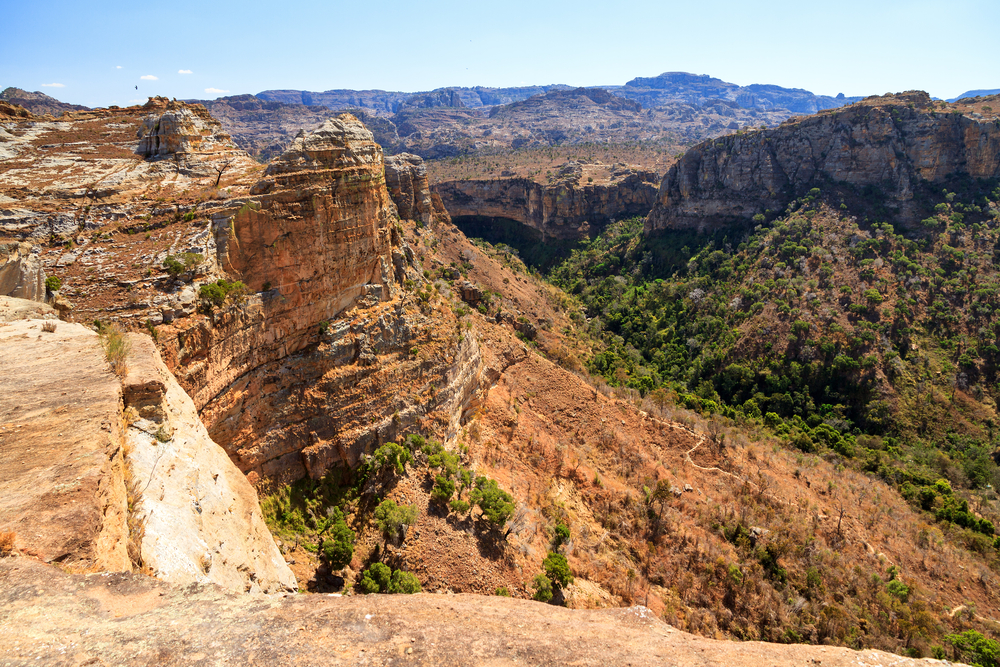Andohahela Overview
Andohahela National Park, locally known as “Parc National d’Andohahela,” is located in the southeastern region of Madagascar, near the city of Tolagnaro (Fort Dauphin). Established in 1939, this park is unique for encompassing three distinct ecosystems: humid rainforest, dry spiny forest, and transitional forests. Spanning approximately 760 square kilometers (293 square miles), Andohahela showcases the exceptional biodiversity and ecological variety that make Madagascar one of the world’s top biodiversity hotspots. The park’s name, “Andohahela,” translates to “the place where the head is dry,” reflecting its stark ecological contrasts.
The park’s terrain is characterized by a blend of rugged mountains, deep valleys, and vast plains. The Anosy mountain range, a part of the southeastern escarpment, dominates the landscape, rising to over 1,950 meters (6,400 feet) above sea level. This variation in altitude contributes to the park’s diverse climate and vegetation. In the eastern section, lush rainforests flourish, featuring towering trees, ferns, and orchids that thrive in the humid environment. In contrast, the western section is dominated by the arid spiny forest, home to drought-resistant plants such as baobabs, succulents, and the iconic octopus trees (Didierea). The transition zones blend elements of both ecosystems, creating an extraordinary tapestry of flora.
Andohahela is home to an impressive array of wildlife, many of which are endemic to Madagascar. Visitors may encounter ring-tailed lemurs, Verreaux’s sifakas, and the elusive red-collared brown lemurs. The park is also a haven for bird enthusiasts, with species like the crested ibis, Madagascar buzzard, and the rare blue coua. Reptiles and amphibians, such as chameleons and colorful frogs, are abundant, adding to the park’s ecological richness. The spiny forest is particularly notable for its unique adaptations, supporting species that thrive in its harsh conditions.
Visitors to Andohahela National Park can engage in various activities to explore its natural beauty. Hiking trails offer opportunities to experience the contrasting ecosystems, from rainforest treks to walks through the arid spiny forest. Birdwatching is a highlight, particularly in the wetter regions of the park. Cultural tours with local Antanosy communities provide insights into traditional practices and their harmonious relationship with the environment. Visitors can also explore scenic waterfalls like the Riambavy and Riandahy cascades, perfect spots for relaxation and photography.
Despite its ecological and cultural importance, Andohahela faces challenges such as deforestation, agricultural encroachment, and limited resources for park management. Conservation efforts led by Madagascar National Parks and international organizations focus on sustainable tourism, habitat restoration, and community engagement. These initiatives aim to balance conservation with the needs of the local population, ensuring that the park’s resources are protected for future generations.
Andohahela National Park is a remarkable example of Madagascar’s diverse landscapes and rich biodiversity. Its unique ecosystems, captivating wildlife, and cultural significance make it a must-visit destination for nature enthusiasts. Protecting this extraordinary park is essential for preserving Madagascar’s natural heritage and supporting global biodiversity conservation.
















































































